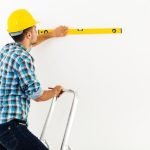Are you wondering, “Can I deduct home improvement tax from taxes?” Understanding home improvement tax deductions is essential for homeowners looking to maximize their tax benefits. This comprehensive guide will provide you with all the information you need to know about claiming home improvement expenses on your taxes.
When it comes to qualifying as a tax-deductible home improvement expense, there are certain criteria that need to be met. From documentation requirements to understanding the limits and restrictions, this guide will walk you through what qualifies as a deductible expense and how to calculate and claim these deductions.
In addition to understanding the basics of home improvement tax deductions, this guide will also cover topics such as energy-efficiency credits, home office and business use deductions, common mistakes to avoid when claiming deductions, and seeking professional assistance for navigating the complexities of these tax benefits. Whether you’re a DIY enthusiast or hire contractors for your home improvements, knowing what expenses can be deducted can potentially save you money come tax season.
What Qualifies as a Tax-Deductible Home Improvement Expense?
When it comes to claiming home improvement tax deductions, it’s important to understand what expenses qualify for this benefit. Here are some examples of home improvement expenses that can potentially be tax-deductible:
- Energy-efficient upgrades such as solar panels, energy-efficient windows, and insulation
- Medical improvements such as adding ramps or widening doorways for disabled individuals
- Home office expenses if a portion of your home is used exclusively for business purposes
- Renovations for medical care, such as installing specialized equipment in your home
It’s essential to keep in mind that not all home improvements are eligible for tax deductions. Expenses related to aesthetic enhancements or general maintenance typically do not qualify. It’s always best to consult with a tax professional if you’re unsure about whether a specific expense can be deducted from your taxes.
In addition to the expenses listed above, there are also certain limitations and restrictions on claiming home improvement tax deductions. For example, if you use a portion of your home for business purposes, you may be able to deduct expenses related to that area, but strict guidelines apply.
Similarly, there are maximum limits on how much you can claim for certain types of energy-efficient improvements. Understanding these limitations can help ensure that you make the most of potential tax benefits while avoiding any issues with the IRS.
Documentation Needed to Claim Home Improvement Tax Deductions
When claiming home improvement tax deductions, it’s crucial to have the proper documentation in order to support your claims and avoid any potential issues with the IRS. Here are some important documents you should have on hand:
1. Receipts and Invoices: Keep all receipts and invoices related to the home improvement project, including materials, labor costs, and any other expenses incurred during the renovation or upgrade.
2. Contracts and Agreements: If you hired a contractor or professional to perform the home improvement work, make sure to retain copies of any contracts or agreements that outline the scope of work, cost estimates, and payment terms.
3. Property Value Before and After Improvements: It can be helpful to have an appraisal or assessment of your property’s value before and after the improvements were made. This can demonstrate the increase in value as a result of the home improvement project.
In addition to these documents, it’s important to keep thorough records of any communication with contractors or professionals involved in the project. This includes emails, phone conversations, and any changes or updates made to the original plans.
Remember that without proper documentation, you may not be able to substantiate your claims for home improvement tax deductions. Consult a tax professional if you have any doubts about what documentation is required for your specific situation. With accurate and complete records, you can confidently claim your eligible home improvement expenses on your taxes.
Home Office and Business Use of Home Deductions
When it comes to home improvement tax deductions, one potential area that homeowners may overlook is the ability to deduct expenses related to a home office or business use of the home. This can provide significant tax benefits for individuals who operate a business from their primary residence or use part of their home for work purposes.
However, it’s important to understand what qualifies as a tax-deductible expense in this category and the documentation needed to support these deductions.
Qualifying for Home Office Deductions
In order to qualify for home office deductions, the portion of your home used for business purposes must be used regularly and exclusively for conducting business activities. This means that a dedicated space within the home, such as a separate room or designated area, must be utilized solely for work-related activities. Additionally, the space must be the primary location where business is conducted or where administrative tasks are performed if you conduct business outside of your home.
Expenses That Can Be Deducted
Home office deductions allow you to deduct a portion of certain household expenses that are directly related to operating your business. This includes expenses such as mortgage interest, property taxes, utilities, homeowners insurance, and repairs and maintenance costs for the portion of your home used for business purposes. It’s important to keep detailed records and receipts for these expenses in order to accurately claim them on your tax return.
As with any tax deduction, it’s essential to consult with a professional tax advisor or accountant who
Energy-Efficiency Home Improvement Tax Credits
As part of the effort to promote energy efficiency in homes, the government offers tax credits for certain home improvements that contribute to reducing energy consumption. This can result in substantial savings for homeowners while also helping to protect the environment. Below are some key aspects to consider when looking to claim energy-efficiency home improvement tax credits.
Qualifying Energy-Efficient Home Improvements
To qualify for energy-efficient home improvement tax credits, the IRS has specific criteria that must be met. Examples of eligible improvements include installing energy-efficient windows, doors, skylights, insulation, roofing materials, and heating, ventilation, and air conditioning (HVAC) systems. Additionally, adding solar panels or other renewable energy systems may also qualify for tax credits.
Obtaining the Necessary Documentation
In order to claim energy-efficient home improvement tax credits with the IRS, it is important to keep detailed documentation of the improvements made. This includes saving receipts and invoices from contractors or purchase records for DIY projects. Additionally, it’s crucial to obtain a Manufacturer Certification Statement for any qualified products installed as part of the improvements.
Claiming Energy-Efficiency Home Improvement Tax Credits
When filing taxes, homeowners can claim these tax credits using Form 5695 (Residential Energy Credits). This form allows individuals to calculate their total eligible expenses and ultimately determine how much of a credit is available. It’s important to review this form thoroughly and accurately report all necessary information in order to avoid potential errors or delays in receiving the credit.
By understanding these key points about energy-efficient home improvement tax credits, homeowners can take advantage of available benefits while making their homes more sustainable and cost-effective. It’s always advisable to consult with a tax professional or accountant for personalized guidance on claiming home improvement tax deductions and maximizing potential savings.
Limits and Restrictions on Home Improvement Tax Deductions
When it comes to claiming home improvement tax deductions, it is important to be aware of the limits and restrictions that may apply. While many home improvement expenses can be eligible for tax deductions, there are certain rules and regulations that govern these deductions.
One key restriction to keep in mind is that only expenses related to capital improvements can typically be deducted from taxes. This means that routine repairs and maintenance, such as fixing a leaky faucet or repainting a room, do not qualify for tax deductions. In order for an expense to be considered deductible, it must add value to the home, prolong its useful life, or adapt it to new uses.
Additionally, there are limits on the amount of money that can be deducted for certain types of home improvement expenses. For example, when claiming a deduction for energy-efficient home improvements, there may be caps on the total amount that can be claimed. It is crucial to stay informed about these limits in order to accurately calculate and claim your deductions.
Another important restriction to consider is the requirement for proper documentation of all home improvement expenses. Without adequate documentation, you may not be able to support your claims in the event of an audit by the IRS. Therefore, it is essential to keep all receipts, contracts, invoices, and other relevant records related to your home improvement projects.
Understanding these limits and restrictions will help ensure that you are accurately calculating and claiming your home improvement tax deductions. By staying informed and organized, you can maximize your potential tax savings while complying with regulations set forth by the IRS.
How to Calculate and Claim Home Improvement Tax Deductions
When it comes to claiming home improvement tax deductions, it’s important to understand how to calculate and claim these expenses properly. The good news is that there are various situations in which you can deduct home improvement expenses on your taxes. Whether you’ve made improvements for medical reasons, home office use, or energy-efficiency upgrades, there are specific rules and guidelines for each type of deduction.
To calculate and claim home improvement tax deductions, start by determining which expenses qualify. Generally, any expense that adds value to your home or prolongs its life can be considered a deductible expense. This includes renovations, additions, landscaping, HVAC installations, and more. Keep in mind that simple repairs or maintenance may not qualify for a tax deduction.
Once you have identified the qualifying expenses, it’s essential to keep accurate documentation of all costs incurred. You will need receipts, invoices, contracts, and any other relevant paperwork to support your deduction claims if the IRS were to conduct an audit. Additionally, be sure to keep records of any permits pulled and professional inspections done as part of the home improvement projects.
According to the IRS guidelines on how to claim home improvement tax deductions, these expenses are typically claimed as itemized deductions on Schedule A (Form 1040). If the total amount of itemized deductions exceeds the standard deduction you’re eligible for based on your filing status, then you can benefit from these tax deductions. However make sure you meet eligibility standards and consult with a tax professional if necessary before attempting to claim them on your taxes.
| Home Improvement Expense | Tax-Deductible Amount |
|---|---|
| Renovations | $5,000 |
| Energy-Efficient Upgrades | $1.500 |
| HVAC Installations | $3.000 |
Common Mistakes to Avoid When Claiming Home Improvement Tax Deductions
When claiming home improvement tax deductions, it is important to be aware of common mistakes that can potentially lead to issues with the Internal Revenue Service (IRS). One common mistake to avoid is improperly claiming expenses that do not qualify as tax-deductible home improvement expenses.
For example, regular maintenance and repairs, such as painting a room or fixing a leaky faucet, are generally not eligible for tax deductions. However, if these maintenance tasks are part of a larger home improvement project that qualifies, then they can potentially be deducted.
Another mistake to avoid is failing to properly document and keep track of all expenses related to home improvement projects. The IRS may require detailed documentation to support your claims for tax deductions so it is important to keep receipts, invoices, and any other relevant paperwork in case of an audit or review by the IRS.
It’s also crucial to understand the limits and restrictions on home improvement tax deductions. These limitations can vary based on factors such as the type of improvement, the nature of the expense, and whether the improvements were made for personal or business use. Making sure you are aware of these restrictions can help prevent errors when claiming your tax deductions.
| Common Mistakes | Avoidance Actions |
|---|---|
| Improperly claiming non-qualifying expenses | Educate yourself on what qualifies for tax deductions and seek professional guidance if needed. |
| Failing to keep proper documentation | Maintain organized records of all home improvement expenses with supporting receipts and invoices. |
| Ignorance of limits and restrictions | Thoroughly research the restrictions and consult with a tax professional for clarification. |
Seeking Professional Assistance for Home Improvement Tax Deductions
If you find yourself feeling overwhelmed by the complexities of home improvement tax deductions, seeking professional assistance can be a wise decision. Tax laws and regulations can be confusing, and enlisting the help of a tax professional or accountant can provide valuable guidance in navigating the process.
A qualified tax professional can help you identify all eligible home improvement expenses that are tax-deductible and ensure that you are maximizing your deductions. They can also offer advice on documentation requirements, potential red flags that may trigger an audit, and ways to organize your expenses for optimal deduction opportunities.
In addition to helping with current year deductions, a tax professional can also provide insight into planning for future home improvement projects with tax implications in mind. Their expertise can assist you in making sound financial decisions related to home improvements that can benefit you come tax time. Ultimately, consulting with a professional can provide peace of mind and confidence in accurately claiming any eligible home improvement tax deductions for your particular situation.
Additional Resources for Home Improvement Tax Deductions
In conclusion, understanding the ins and outs of home improvement tax deductions can result in substantial savings for homeowners. By taking advantage of tax-deductible home improvement expenses, individuals can potentially reduce their tax burden and keep more money in their pockets. However, it is important to note that not all home improvements qualify for tax deductions, so it is crucial to thoroughly document and understand the IRS guidelines before claiming any deductions.
It is essential to keep detailed records of all home improvement expenses and ensure that they meet the criteria set forth by the IRS. Additionally, seeking professional assistance from a tax advisor or accountant can provide valuable guidance and ensure that homeowners make accurate claims when filing their taxes.
Furthermore, individuals should also explore additional resources available to them, such as online tools or publications provided by the IRS, to stay informed about any updates or changes regarding home improvement tax deductions. Keeping abreast of the latest information can help homeowners maximize their savings while avoiding common mistakes that could lead to penalties or audits.
Ultimately, with careful planning and proper documentation, homeowners can take full advantage of eligible home improvement tax deductions while staying within the limits and restrictions set by the IRS.
Frequently Asked Questions
Can I Deduct Home Improvements on My Tax Return?
Generally, home improvements cannot be deducted on your tax return. However, if the improvement is considered a medical expense, such as adding ramps or handrails for a disabled person, it may be deductible.
Is Home Improvement Interest Tax Deductible?
In most cases, home improvement interest is not tax deductible. However, if the home improvement is considered a substantial renovation that increases the value of the home, the interest may be deductible as home mortgage interest.
What Is Tax Deductible for Homeowners?
Tax deductions for homeowners can include mortgage interest, property taxes, and certain home-related expenses such as energy-efficient home improvements or home office expenses. It’s important to keep accurate records and consult with a tax professional to ensure you are taking advantage of all available deductions.

I’m thrilled to have you here as a part of the Remodeling Top community. This is where my journey as an architect and remodeling enthusiast intersects with your passion for transforming houses into dream homes.





